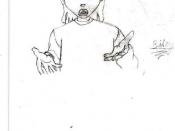Critically analyse the main theories on interjections like 'Huh!', 'Ah!', 'Ha!', etc. How would you decide whether these were part of the language, to be dealt with in the grammar? What alternatives might there be?
Interjections are dealt with in the semantic area of linguistics. They are an important aspect that is worth considering in regards to semantics due to the fact that they are so commonly used, differing from language to language but nevertheless, ever present. When analysing interjections, we must first and foremost confirm what is generally communicated by the term - interjections. This isn't as easy as it primarily seems; semanticists have been seen to put interjections into varying classes, even opposing each others views on whether some items actually constitute an interjection or not.
There does not appear to be a general agreement on the definition of interjections, but on a very general level it would be fair to suggest that interjections are those items that can be interjected into the language to contribute to the meaning or feeling of an utterance.
To add to this, however, one finds that interjections can indeed occur on their own to communicate an idea or proposition in a quick and easily digested manner. One important aspect of interjections in relation to language is that unlike traditional lexical items they do not have to be learnt, in fact, it could be suggested that some interjections come almost by reflex. It should be noted at this point that, as observed by Tim Wharton in his Interjections, language and the 'showing'/'saying' continuum , interjections in the written form always constitute an intonation and are usually separated from the rest of the main clause by a comma or exclamation mark, thus highlighting their semantic separation from the main clause. Some of the most...


